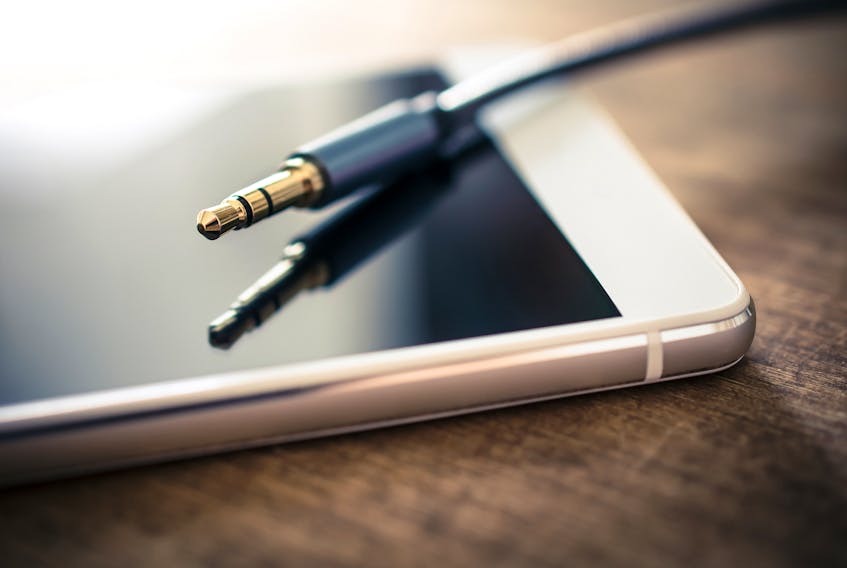By David Harding
[email protected]
A British cybersecurity expert helped crack a kidnapping case involving two Canadian women -- one of them from Amherst -- armed with little more than three mobile phone numbers.
Gordon McKay, who has worked on several high-profile cases, was able to give police in Ghana, West Africa, vital information that led to the release of two University of New Brunswick students, Lauren Tilley and Bailey Chitty, earlier this year. Chitty grew up in Cumberland County, just outside Amherst, while Tilley is from Rothesay, N.B.
The women were abducted at gunpoint and held hostage for a week in June until McKay’s international detective work helped free the women from their frightening ordeal and led to the arrest of their captors.

Working from his home close to Winchester, Hampshire, in southern England, McKay was able to use high-tech cell phone information to pinpoint the location of three mobile phone handsets connected to the kidnapping. That helped police in Ghana rescue the women and bring the kidnappers to justice within just 24 hours of receiving the fresh intelligence.
He was not told by the African security services who the numbers belonged to, just that they were crucial to the case.
Tilley and Chitty were abducted at gunpoint in Kumasi, Ghana’s second-largest town, on June 4.
Tilley, who was 20 at the time, and Chitty, 19, had been working with Youth Challenge International, an international development organization headquartered in Toronto.
Their kidnappers contacted their parents and demanded an $800,000 ransom.
The women were freed a week later and police in Kumasi later arrested five Ghanaians and three Nigerians.
But as the case of four alleged kidnappers has just gone before a court in Ghana’s capital, Accra, what is only now emerging is the incredible high-tech and international tale of how the Canadian women were released.
Several days after the abduction, Ghanian security services contacted, through an intermediary, a British surveillance company called Butler Horn, headed by McKay, to see if they could help track down the women.

In a desperate race against time, Butler Horn was directly approached to see if they could use the numbers of three mobile phones, provided to them by Ghanaian police, to help trace the women and their abductors.
The company was not even told who the phones belonged to, just that they were crucial to the case.
With just the three numbers and a map of local cell phone masts, the company set about their task.
Crucially, the details provided included what's known as the azimuth. That's is the obscure piece of information that helps reveal which cell phone tower the mobile phone last connected to and, crucially, roughly where that person was when they last used their device.
The Azimuth helps to narrow down to a small area, just where the person was when they were last on the phone.
The students were found because of the science behind the cell phone network.
Each phone tower has three cells, which on every tower, are located 120 degrees apart from each other. This 120-degree arc is known as the azimuth.
“If you know what cell the phone connected with, you know what direction the phone is to the cell tower,” McKay said.
“Immediately, you are three times more accurate if you know the direction. You can estimate how far the phone is from the tower.”
Armed with this information, the investigators were able to estimate where the gang and the two students were.
Each phone call made betrays where the user is at that moment.
When you turn your phone on, it looks for the strongest signal, usually the nearest cell tower. The phone also sends crucial information to the tower including the “International Mobile Subscriber Identity” or IMSI.
This 15-digit number uniquely identifies the user.
Through such things as the phone’s reception level, an investigator will then also be able to determine how far or close to the tower the user was, as well as in which direction.
Although McKay knew the case related to an abduction, his company was only provided with the three phone numbers and little else.
But it was through their ability to trace where they were used, from thousands of kilometres away, just using the estimated co-ordinates of the phones that led to the kidnap gang’s capture.
“We gave that information to our intermediary, who gave it to police and the women were found the day after,” McKay said.
Other examples of firms using technology to locate missing people include the cybersecurity company NSO, currently being targeted overselling of software to government, which claimed to help authorities in Brazil and Mexico help find missing people following natural disasters.
In the Canadian case, the gang was captured the next day after receiving the cell phone information from Butler Horn. Some are now on trial.
A court in Accra heard at the end of last month that the kidnappers sent photos of the two Canadian women covered in chicken blood to their anxious parents.
The gang had used the blood to frighten the parents into paying up the ransom, the court heard.
Tilley and Chitty were abducted as they left a restaurant for their apartment. Both were blindfolded, tied and threatened with lives and guns, the court heard.
They were eventually rescued on June 11.
Four people have been charged with two counts of conspiracy to commit kidnapping and kidnapping. All have pleaded not guilty.
Another four people were arrested after the kidnapping but were later released.
The case is scheduled to come back to Accra High Court on Nov. 21.
RELATED









